Lachlan Gyde, Executive Director, Retail, Residential and Commercial, Ithra Dubai; Abdul Rashid, Group CEO, Pulseberry Health Consulting and Ali Al Hammadi, Operations Supervisor, Waterfront Market, provide a glimpse into the Waterfront Market’s
day-to-day activities, the integrated approach being rolled out to ensure food safety by way of securing the cold chain and the intangible payback of high investment in quality facilities and a skilled work force. Excerpts from their interview with Hannah Jo Uy…
Could you provide us with a summary of the mechanisms in place within the Waterfront Market with regard to ensuring food safety, by way of securing the cold chain, given the scale and number of stakeholders involved in day-to-day operations?
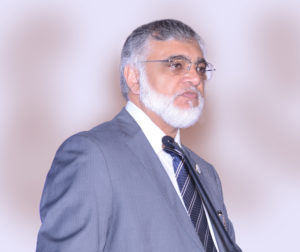
Abdul Rashid
Abdul Rashid: We implement logical controls in temperature monitoring. The fish companies, for example come in with their own temperature-controlled vehicle, which my team inspects to make sure there are no temperature excursions. Frozen items coming in by air are monitored at the point of entry by Dubai Municipality (DM), and they monitor frozen vehicles on site. Excess stock [from the auctions] are placed in cold storage facilities. My team would monitor temperature control and exposure, even from when they park the vehicle adjacent to the loading bay. If we feel there is long-term exposure we ask them to put it back in the vehicle, until it’s sold. We assess based on food quality, freshness, damage, infestation of insects, the quality of meat and fish in the vehicle during transportation, as well as in the stalls and displays.
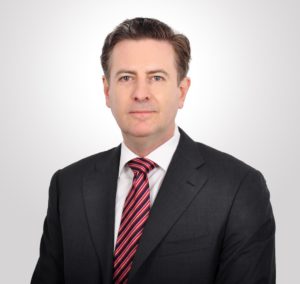
Lachlan Gyde
Lachlan Gyde: WFM also works closely with DM and Roads and Transport Authority (RTA). In the evenings, they come down at 9PM up until the next morning, going through the transport vehicles to check for road worthiness, temperatures and whether the equipment is being used correctly.
Rashid: This is similar to how we handle the meat, some of which comes from local abattoirs while others come from as far away as Australia and New Zealand. From the point of entry, we monitor the cold chain process. Some [vehicles] have digital monitoring. If the vendor turns it off and the monitors indicate high or fluctuating temperature – that’s revealed when we download the information. We try to encourage people to have data monitoring units, because manual [monitoring] is open to manipulation. We do cross-check what we could not monitor ourselves, we can tell if something has been temperature abused for a period of time, if a product has a different colour and texture. We have a fair number of people from DM here. We support and assist them with the monitoring process, providing round-the-clock inspection.
Gyde: Essentially, we have DM, Pulseberry and Waterfront people on the ground. There are years of experience within those teams. They have a fair idea of who is going to try and slip past [protocols]. Vendors are not new – they have an understanding of the likely offenders.
In the event of such a violation, what steps are taken? And prior to that how much emphasis is being given on training?

Security personnel ushering one of the vendor representatives into a rented cold store unit
Rashid: We leave the policing to the DM. Our primary role, in conjunction with WFM, is to ensure products on sale are high quality and there is no risk of illness because of temperature controls. We provide guidance in cold chain. Our focus is not on confiscation or instruction of legal requirements – that’s DM. Our role is to increase awareness and look at the risk they pose to the public in terms of products sold. We provide coaching, training and awareness to the vendors and the workers. We began with existing stakeholders. This is not a classroom level of understanding, as you expect from an average business person. The coaching is done by showing good practice. We show them how to wash their hands, why they shouldn’t smoke and where they should stand by the pallets. We give them reason as to why that’s not right. We have to make sure they understand.
Even with the shellfish on display, we advise how to stack in a layer, the amount of ice to use, how much of the fish is covered – all of these elements maintain the temperature of fresh items coming in and being sold to the customer. In the trucks, our role is to ensure temperature is maintained and to promote awareness on why proper temperature controls are important [to ensure] quality of fish. When we are there, they understand that to maintain the quality of the products means selling it. We show them if something is spoiled, they would get less. We try to link the business aspect to the scientific aspect of temperature control.
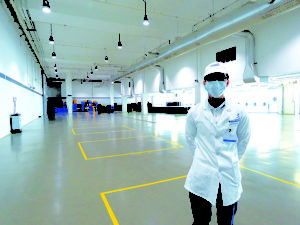
An employee from Pulseberry Health Consulting oversees the cleaning of the seafood auction area
Gyde: It’s also about putting the right facilities in place, with high-tech [controls in] chiller rooms of different temperature, for example. We also introduce ID systems. When people come in, they have to meet certain standards, and if not, we know who they are, we go from retraining to banning.
The overriding issue is food safety. We don’t buy or sell fish, we just set up a facility for traders. It’s almost a government facility, so [it is important] to show best practice, in terms of people coming in, selling and buying. At the end of the day, from our point of view, they don’t say truck or vendor A, B or C [is the source of subpar food]. They say “It’s Waterfront”, and we represent Dubai, so we want to put our best foot forward. We take it very seriously – only good food is coming in and going out.
This must entail a strong amount of investment, both in resources and manpower. Given that there is a large number of vendors, how does the management encourage compliance with regard to standards, and what aspects of the facility are available to them?
Gyde: Vendors could buy one, two or three pallets. There are -3 degrees C [storage facilities] and bigger ones at -18 degrees C [for] seafood and fresh food. They can lease one of those four rooms. It’s very scalable [as per their need]. It’s accessible by card access. We control security, clean it and run it.
We have an annual maintenance contract, monthly cleaning schedule and ad hoc checks.
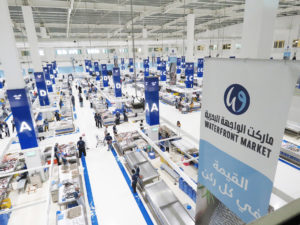
Vendors in the seafood section of the Waterfront market
Rashid: In cold stores, it’s acceptable to segregate in large cold store units, where one side is fish and one side is meat, if in compliance with [best practice], so there is no cross contamination and both products are at the right temperature. There are dedicated units and combined areas for meat and fish, we make sure there are segregated, even when areas are leased. All pallets are also plastic pallets, not wooden pallets and open at the base,
so it doesn’t hinder the air circulation. There is 6 mm of open space between lower and upper ends to ensure adequate [air flow]. We also police it from outside, [to make sure it is] up to standard. We report back to operations [in case of violations], and operations get involved.
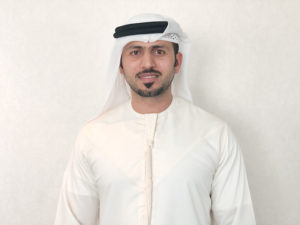
Ali Al Hammadi
Ali Al Hammadi: We also take the temperature reading, which is connected with the BMS system. Operators can see the temperature, if it’s getting more or less and they can immediately address it through the BMS.
Gyde: The BMS also helps monitor when you open and close doors – you get alerted if the temperature is too high. There is a lot of choreography involved. Essentially, we made an investment here on behalf of Dubai, and we have to maintain it. We take a long term view. We want to be a worldclass market to provide intrinsic value to Dubai. It’s not about dollar return. We are making the market more of a lifestyle property. This is leading to continual investment. Even from operating the air conditioning we spent a lot more money [for fresh air changes] to get rid of the overpowering smell of fish; we work very hard upgrading the area where the trucks come and park. We invested in machinery. We are not perfect, but we have learnt how we operate. Facilities cost money to build and operate, and we are still putting in capital to ensure world’s best practice standards.
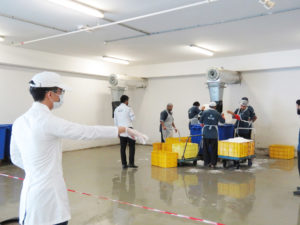
Vendors waiting in line to obtain ice for fresh produce being sold
Rashid: Our priority is to ensure compliance is in place for the food code of DM. That’s the criteria of assessment. Before we came on board, I took the time to visit the fish markets in the UK to see food safety and cold chain compliance of facilities here. The facilities here are better than in the UK, because [in the UK] they are fragmented, as the cold store space is run by a third-party, even the provision of ice. Within WFM, one integral party is
managing facilities inspection and ice production to ensure quality is maintained. Operationally, it is seamless. This helps with logical points of control which are otherwise a challenge to facilities. I don’t have to call different companies and then contact operations – they coordinate internally with FM, or whoever, in a more seamless manner, which helps maintain the cold chain process.
Hannah Jo Uy is Assistant Editor at Climate Control Middle East magazine. She may be contacted at hannah@cpi-industry.com
Copyright © 2006-2025 - CPI Industry. All rights reserved.